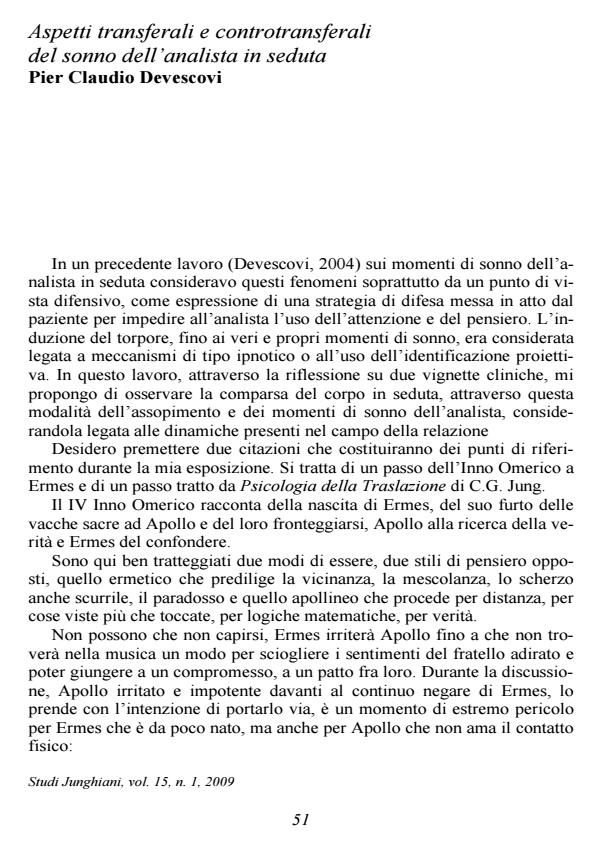Aspetti transferali e controtransferali del sonno dell’analista in seduta
Journal title STUDI JUNGHIANI
Author/s Pier Claudio Devescovi
Publishing Year 2009 Issue 2009/29
Language Italian Pages 14 P. 51-64 File size 238 KB
DOI 10.3280/JUN2009-029003
DOI is like a bar code for intellectual property: to have more infomation
click here
Below, you can see the article first page
If you want to buy this article in PDF format, you can do it, following the instructions to buy download credits

FrancoAngeli is member of Publishers International Linking Association, Inc (PILA), a not-for-profit association which run the CrossRef service enabling links to and from online scholarly content.
Transferal and countertransferal aspects of the analyst’s sleep during the session - The psychoanalyst’s moments of sleep during the session are usually considered as failures of the listening. The author holds that they don’t concern only the psychoanalyst’s inner world but they can be considered as signs hinting at elements of the relation too. The reference to a passage of Homeric Hymn to Hermes and to alchemic model concerning the relation between Soror and Adepto that Jung reproduces in The Psychology of the Transference are the main points of reference of this paper. Two clinical reports explain author’s opinion.
Parole chiave: linguaggio ermetico, linguaggio apollineo, presagio, sonno dell’analista, corpo, transfert, controtransfert.
Key words: Hermetic language, Apollonian language, presage, analyst’s sleep, body, transference, countertransference.
- Embodying analysis: the body and the therapeutic process Salvatore Martini, in Journal of Analytical Psychology /2016 pp.5
DOI: 10.1111/1468-5922.12192 - La vitalità del corpo nella relazione di transfert-controtransfert. Il trickster nel lavoro analitico con i bambini Emanuela Pasquarelli, in STUDI JUNGHIANI 37/2014 pp.29
DOI: 10.3280/JUN2013-037003
Pier Claudio Devescovi, Aspetti transferali e controtransferali del sonno dell’analista in seduta in "STUDI JUNGHIANI" 29/2009, pp 51-64, DOI: 10.3280/JUN2009-029003